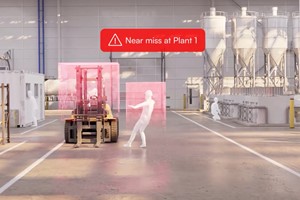The contemporary building landscape is characterized by increasing verticality and intricate system convergence. This necessitates a sophisticated approach to safety and security management, safeguarding occupants against an array of potential threats. Building Information Modeling (BIM) emerges as a transformative digital tool, revolutionizing how we plan and execute safety and security measures within the built environment.
BIM: Beyond Traditional Design
BIM transcends the limitations of conventional CAD software. It leverages a dynamic 3D model to facilitate collaborative project creation and management throughout the design phase and beyond. For security professionals, BIM represents a paradigm shift. It enables meticulous security system integration within the architectural design from the outset. This proactive approach contrasts with traditional practices where security is often relegated to an afterthought, leading to cost inefficiencies and potential security vulnerabilities.
BIM-Driven Efficiency in Security System Installation
BIM streamlines security system installation by fostering superior collaboration and planning through the visualization of security systems within the comprehensive building model. This translates to a more precise and expedited installation process.
- Optimized Lock and Hardware Installation: 3D visualization empowers security professionals to pinpoint every access point within the building, minimizing installation time and errors.
- Strategic Camera Placement: BIM excels in optimizing camera sightlines and coverage. Security professionals can simulate camera locations within the model, considering environmental factors and potential obstructions to ensure optimal placement.
- Access Control System Planning: BIM facilitates the planning and deployment of access control systems. By modeling building layouts and population flows, security professionals can strategically position access points for enhanced security and user experience.
Real-World Applications and the Power of the Digital Twin
BIM facilitates the design and installation of a fully integrated security ecosystem encompassing alarms, cameras, and access controls. This digital twin enables security professionals to meticulously analyze the effectiveness of their systems under diverse scenarios. Emergency simulations encompassing crowd movements, natural disasters, and other eventualities ensure that security measures respond appropriately.
Furthermore, BIM fosters collaboration among security professionals, architects, and building managers. By working on a unified digital platform with real-time information exchange, stakeholders can collaboratively develop a comprehensive security plan.
Enhanced Emergency Response through BIM
BIM plays a pivotal role in emergency preparedness. Escape routes, emergency exits, and the positioning of life-saving equipment can all be meticulously planned within the BIM model. This empowers buildings to significantly enhance their emergency response capabilities.
During emergencies, BIM models serve as invaluable guides for first responders, providing them with detailed information on the building layout and potential hazards. Integrating these models with real-time data fosters better coordinated and more successful rescue missions.
Technical Considerations and Industry Collaboration
Security professionals must adapt to BIM software to fully leverage its potential. Training and development programs are crucial for maximizing the benefits of BIM. Specialized BIM software solutions cater to security installations, with each offering its own functionalities. Proficiency in these tools is becoming increasingly valuable for security professionals seeking to stay competitive.
Close collaboration between the security industry, architects, and engineers is paramount. This ensures that BIM models accurately reflect security features and systems, leading to the creation of reliable digital twins that enhance building safety and security.
The Future of BIM in Security Integration
The future of BIM in the security industry is promising. As technology advances, BIM capabilities will continue to evolve. We can expect even more detailed and interactive models that will not only aid in initial security system design but also facilitate ongoing security management.
BIM is no longer an optional luxury but a necessity for creating intelligent and responsive security systems that safeguard people and property. Integrating BIM with security measures is essential for building projects to remain competitive and secure in today's landscape.
Conclusion: A Seismic Shift Towards a Safer Built Environment
BIM fundamentally transforms how safety and security are incorporated into building design and management. The available tools and platforms are revolutionizing the security industry's approach, paving the way for more comprehensive, efficient, and cost-effective security solutions.
We are witnessing a significant shift towards a more integrated, secure, and safe built environment, with BIM at the forefront of this transformation. For security professionals, the message is clear: embracing BIM is not just about future-proofing projects but also about contributing to a safer world. By proactively integrating BIM, security professionals can anticipate and neutralize threats before they can cause harm. BIM represents not just a design revolution but a safeguarding one.
By Daniel Drohan












